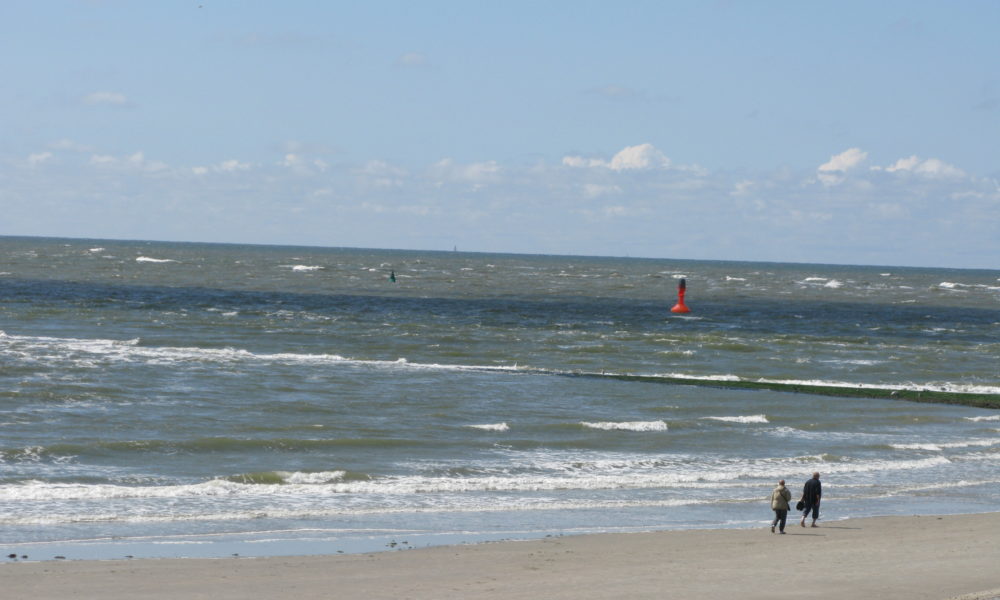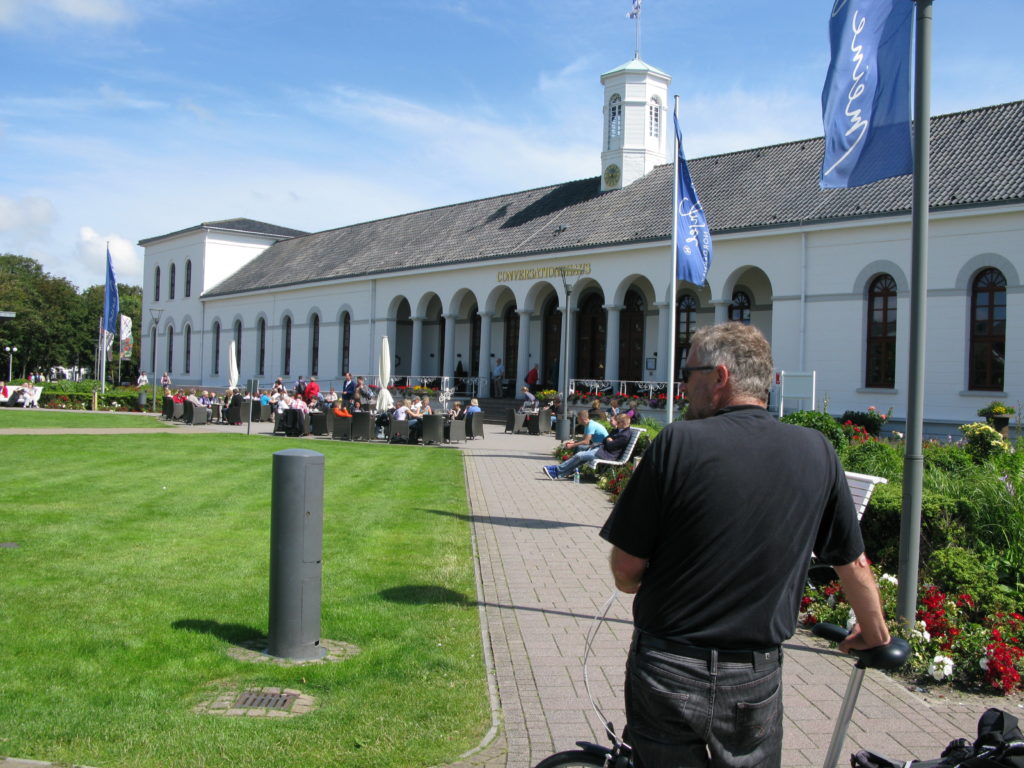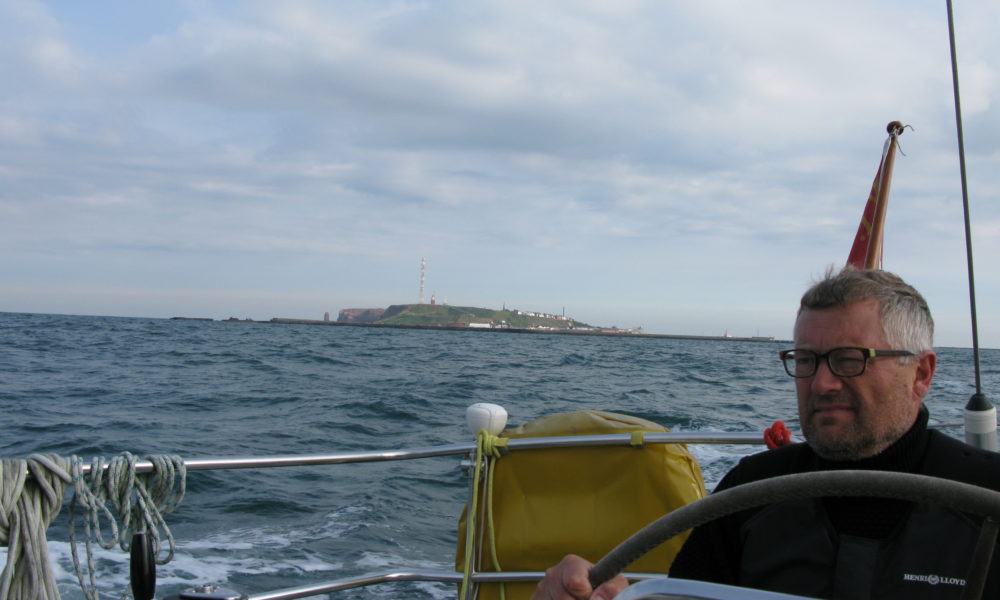
An interesting German spa- and wellness town
53° 42′ 8.3736” N 7° 9′ 56.6208” E
July 14, 2013
We are in Norderney. We are jogging seven kilometers in the town to get a sense of where we’ve arrived.
A spa town. Huge. Almost an industry. Hundreds of hotels and boarding houses, parks, cafes and a waterfront, which is powerful like the North Sea in Denmark. Very neat, very stylish, very beautiful and very subdued. This is apparently how the Germans have cure-vacation.
Back on the boat we do some cleaning. Later we cycle to town to shop. Falling into conversation with the owner of the neighboring boat, Jörg from Cologne, which has his Nauticat 33 lying in Ijselmeer and who knows the tidal waters and the Frisian Islands in and out.

The tips pours out of him. About tides, how to sail in the Wadden Sea, good advice on different cities, and advice on how to put up the boat up for the winter near Amsterdam.
He gives us some charts, a tide application for our computer and an auto map of the entire Netherlands. Good stuff.
“You have to leave at six o’clock in the morning,” he counsels us, looking at the tide-tabels. Damn! We were intending to sleep late tomorrow.

“Hold up” at sea. The police boards our boat and gives us a fine
53° 42′ 8.3748” N 7° 9′ 56.6201” E
Tuesday – July 13, 2012
Friday we decide to leave Helgoland heading for the Frisian island, Norderney.
The wind is against us again. But the weather forecast raised the prospect, that the wind will gradually turn during the day, and with the expectation of this we hoist the mainsail in the harbour of Helgoland, and then using the engine with the mainsail as stabilizing support sails we are ready to let the sail take over when the wind shifts.
We should not have done this.
The direct course towards Norderney brought us through not just one but two traffic separation zones, deep-water routes for large tankers and container ships. One for the river Jade, one for the river Elbe.
There was barely a ship in sight, those few who were, we knew exactly where were, so we “crossed” into the zone instead of taking the perscribed angle of 90 degrees. When such a zone is up to 10 km wide, you win both time and comfort by setting the direction after the wind and the goal instead of the regulations.
We should not at all have done this.
Far out on the horizon, we saw something that resembles a coastguard ship. When we saw it we turned on the VHF on channel 16 in order to hear any messages.
After a while, it looked as if the coastguard-ship had put a small boat in the water, and that this boat was heading towards us.
Damn it! There was no doubt. A high-speed inflatable boat was heading directly toward us. We turned Ronja into the wind, turned off the propellars and let the mainsail flap in the wind.
Shortly after, we were invoked. Four burly policemen in the dinghy. They let us understand, that they wanted to get on board. Very jovially. They joked that they needed lunch and slapped their stomachs.
It was not much about lunch. Two officers boarded Ronja. With pistols in their belts and a binder with forms and papers under the arm.
“We would like to explain why we are here,” they said. That is, the one spoke. The other took notes. “But first we’d like to see some documents – your passport, VHF license, proof of sailing education, nationality proof and evidence of ownership of the vessel.”
Luckily we had our documents under control, and when they subsequently asked for our charts, these were also OK. All charts were from 2012.
“We are here because we have observed, that you have crossed a traffic zone at an angle that differs 30 degrees from the rules of the sea,” said the officer.
He was absolutely right. We knew this in advance, and as if this were not enough, he brought a radar printout from the coastguard ship, where people apparently had followed us for a long time. “Here’s your course,” he said. “We called you on VHF pm. 10:32, but you did not answer”. This was before we turned the VHF on.
However this was only one thing. Then came the second. “We can look at course stability, that you both have had sails up and the engine on … It is only allowed under maritime law, if you with an inverted cone hoisted half up the mast shows that you are a sailing ship that is currently propelled to power” .
“Do you have a cone on board?” asked the officer.
“Certainly,” answered Per. “It is in the starboard bench.”
“Then you must draw it up now,” insisted the officer.
“Can’t we just take down the sail, so we are only motoring?”
“Your decision,” said the officer. And down came the sail.
“You have violated two rules. You will through your own authorities receive a fixed penalty notice of two or three hundred Euros. ”
Kirsten said that they should rather have said yes to get the lunch, which they themselves had proposed before they boarded us. The officers laughed politely and declined the offer. On the whole they were pretty professional. They did not go into discussions whether there had been any danger or any ships at all in the vicinity. They only focused on the fact, that two rules were violated.
They said goodbye and wished us a good journey, as they boarded their dinghy.
“Fucking German bureaucrats,” snorted Kirsten, when they were sailing away. “It is similar to getting a fine for ignoring a red light at a pedestrian crossing in the middle of the night, after having ensured that there is absolutely no traffic.”
Per was more relaxed over the incident. “We did something, we should not have done.” In his opinion, it was a fun and interesting experience.
The experience has led Kirsten, every time she sees a vessel that looks like a coastguard ship, to get a nervous twitch and to ask Per, if what we’re doing at the moment is actually completely legal.
After 12 hours rather good sailing – also with both sails up – we arrived in Norderney.
Log-book: Start of sailing 8.00. Destination: Norderney. Arrival 17.00.